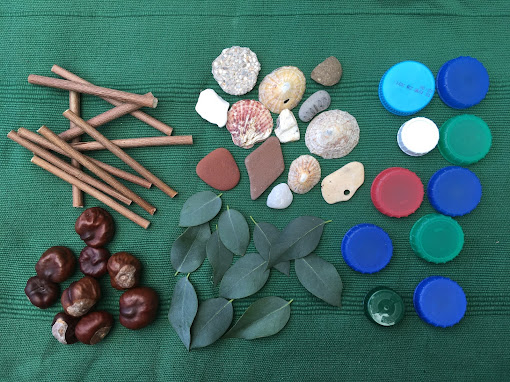Why Wild Maths?
Experiencing maths, seeing maths, touching maths, playing with maths is a great start, giving children the opportunity to learn maths in the way that science is often experienced.
Many years ago, I visited the Mathematikum Museum in Giessen, Germany. I had a fabulous day of mathematical interaction that fascinated and engaged, which included finding one bead in a million (can you find it in the picture below? Apparently, the curator on site said it was the first time he had seen it in three weeks), building Platonic 3-D shapes, levitating beach-balls in air flows, watching a binary clock and creating probability distribution bell curves from falling beads. It was great way to learn maths through the senses.
In 2016, I attended the Matrix Maths Conference in Leeds, which hosted a plethora of inspiring guest speakers from the research/public maths arena. Cindy Lawrence from the National Museum of Mathematics spoke about her museum in New York and the amazing activities that people could do there. It was inspiring, but it left me thinking. For those who could get to such places, they would have an opportunity to be immersed in and interact with maths. But what about the vast majority who would not be able to visit them, even if they wanted to?
Reading is supported in the UK through visiting the local library and delving into bookshops, as well as innumerable magazines and newspapers. Most people still write, even if typing has superseded scribing for many, although another conversation entirely could be had about the quality of writing with the rise of social media. But what about maths? Imagine the creation of national maths libraries. It is an inspiring idea, but then take into account the expense of housing the materials, the cost of providing them, the staff involved – suddenly a great idea becomes complicated and increasingly difficult to implement.
Let’s get back to that pile of stones, or conkers if you wish. Let’s throw in a handful of sticks too, from the garden, local park, hedgerow or wood. All sticks are great, but some are more versatile than others. At this point I throw in the caveat: do some research into the wood/materials you are collecting, that they are safe to use and that their use is allowed. I usually collect sticks from the current year’s growth in the autumn from hedgerows (before they are cut by the farmers) when the leaves have dropped. Young hazel (Corylus) shoots give thin, straight sticks. My favourite wood is elder (Sambucus); it has a soft pithy centre that can be easily hollowed out to string lengths together. Cut the wood to the size needed and have some jute string to hand. Don’t forget the wealth of ‘rubbish’ that you would instinctively throw into the recycling bin. Look closely: a mathematical library is starting to form before your eyes – and the potential links with science abound.








Comments
Post a Comment